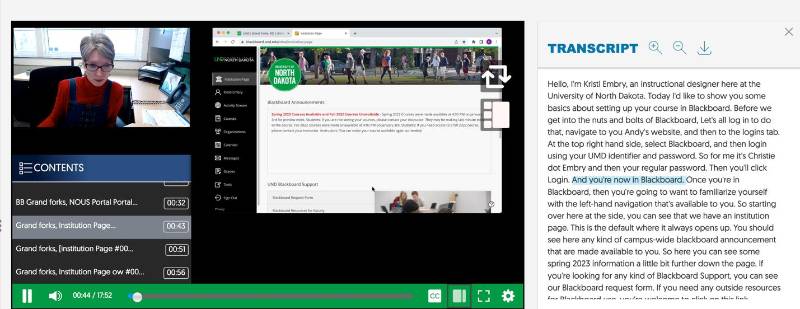Video and Audio Transcripts
What are Video and Audio Transcripts?
Transcripts provide an accurate text version of audio content, either for video or audio files. Transcripts are usually formatted as a downloadable document, most commonly in Word format.
Transcript Example

Video Transcripts
Transcripts differ from captions in that the text is not displayed in sync with the video. Oftentimes, a transcript is viewed separately from its video file. Given this separation, transcripts need to include logical formatting (including headings). Transcripts also need to make sense on their own.
To provide an equitable experience of videos, synchronized captions are required; on their own, transcripts are not usually sufficient. However, there are cases where transcripts may be preferred or required. Having both available is recommended.
Audio Transcripts
A transcript is the only method of providing a text alternative for audio-only files. This can either be a downloadable document or text can be displayed alongside the audio file.
When audio files are embedded in another document, such as a PowerPoint file, a separate transcript is still needed.
Benefits of Transcripts
Transcripts can obviously benefit deaf or hard-of-hearing users. They can also support many other learning strategies, including:
- Locating a specific point in a video
- Note-taking
- Learning new vocabulary
- Learning a new language
- Focusing
- Reviewing
- Searching for terms